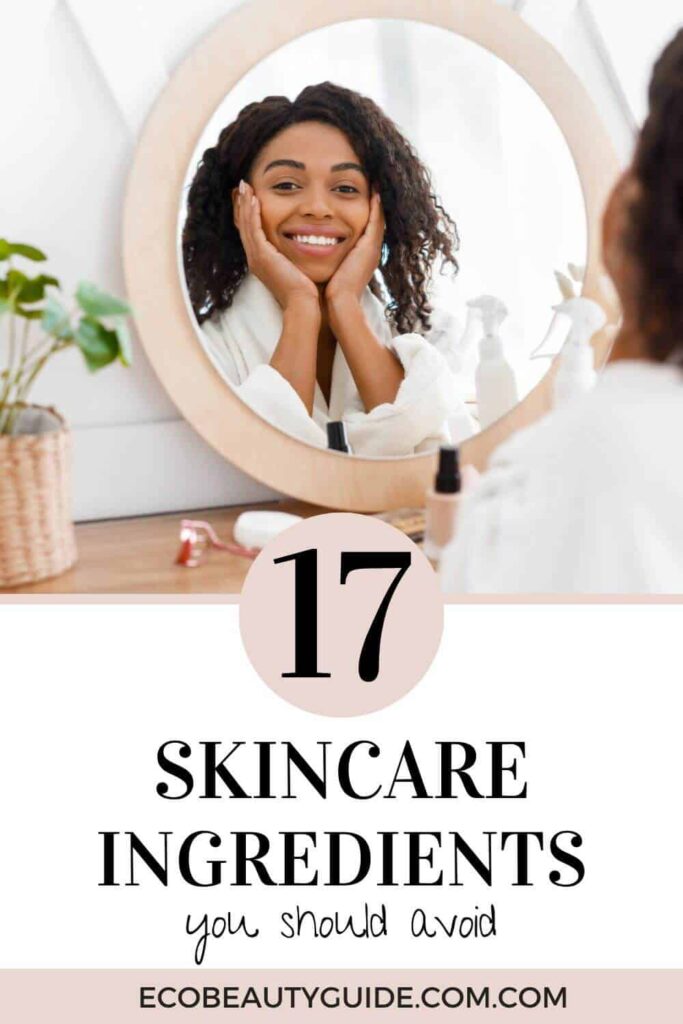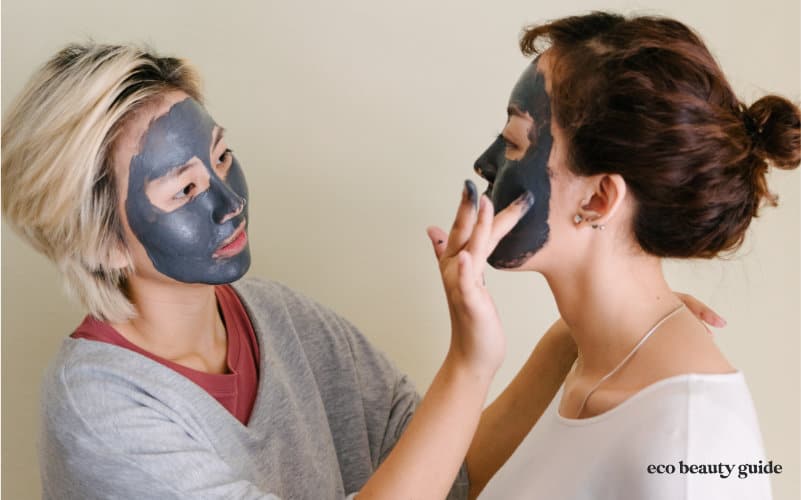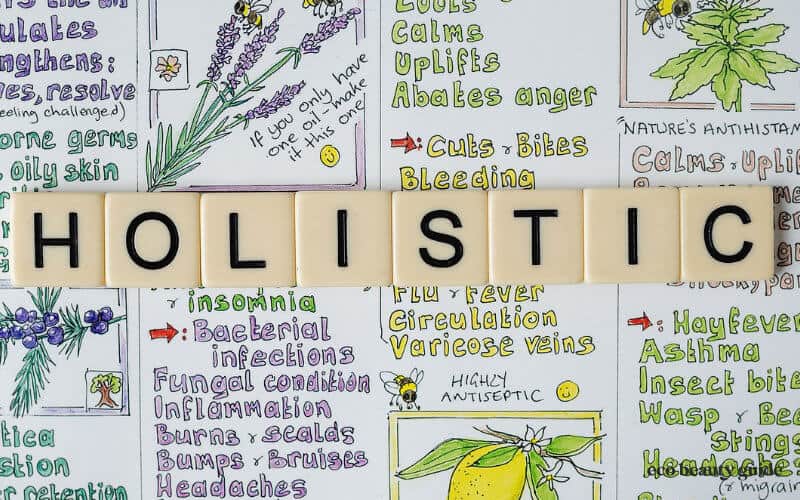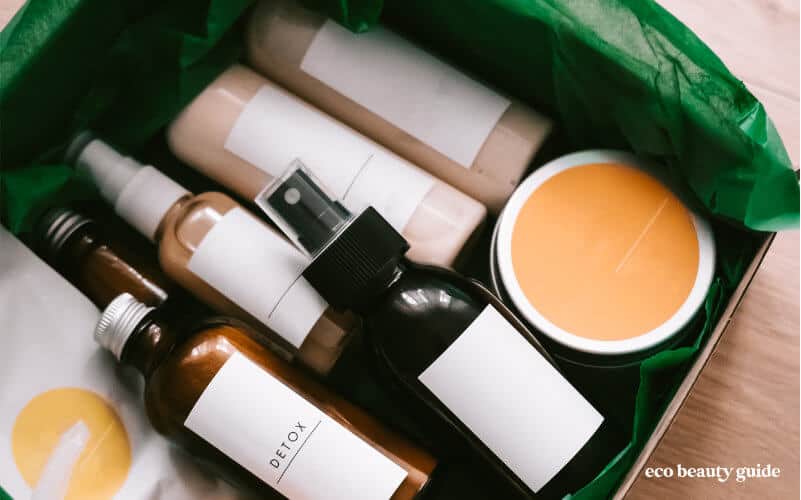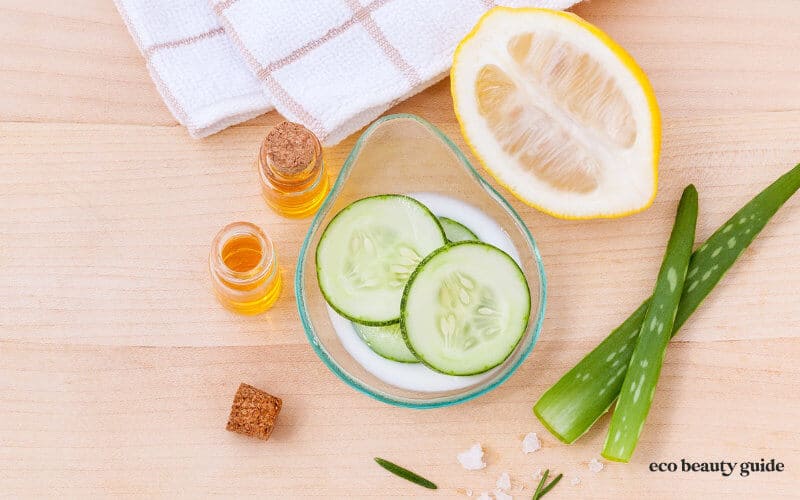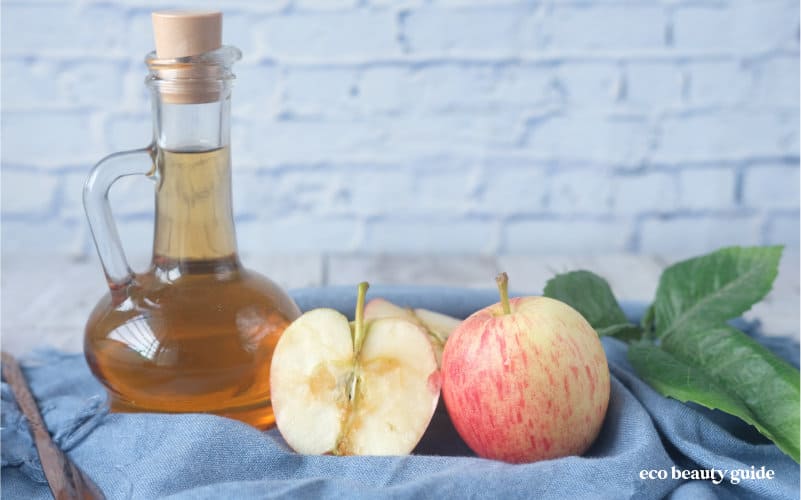17 Ingredients to Avoid in Skincare Products
This post probably contains affiliate links. Which means I may earn a commission if you use them at no cost to you. Please read our boring disclosure for more info.
THIS POST PROBABLY CONTAINS AFFILIATE LINKS. WHICH MEANS I MAY EARN A COMMISSION IF YOU USE THEM AT NO COST TO YOU. PLEASE READ OUR BORING DISCLAIMER FOR MORE INFO.
Are you wondering about what ingredients to avoid in skincare products? I’ve got you covered!
Did you know that more than 50% of cosmetics sold in the US actually contain harmful ingredients? It’s crazy, right? So many products we use every day could be doing more harm than good. In contrast, the European Union has banned over 1400 ingredients, while the FDA has only restricted 11. Quite a big difference, isn’t it? This article is all about exposing the substances hiding in our products, the effects they can have on our skin, and how we can make smarter choices. Let’s dive in and uncover the truth behind those labels.
Why should you avoid toxic ingredients in skincare?
Toxic ingredients in skincare products are a real risk, not just for your skin but for your overall health. These substances can enter your body through your skin and cause various problems like irritation, allergies, hormonal imbalances, and even increase the risk of certain cancers. Here’s the catch: being exposed to these toxins for a long time can make you age faster, which goes against the goal of keeping your skin young. So, it’s essential to steer clear of these toxic ingredients and go for safer alternatives instead.
17 Harmful Ingredients in Skincare
The list of harmful ingredients includes some of the most commonly found toxins in skin care products. We’re talking about preservatives, fragrances, and even foaming agents, each with its own unique risks. It’s not just about skincare, it’s about protecting your health. The dangers these ingredients pose, like hormonal disruption, skin irritation, and even potential links to cancer, are not to be taken lightly. Being aware is the first step towards a safer, healthier skincare routine. So, as we dive into these 17 offenders, don’t forget to keep an eye on those product labels!
1. Sodium Lauryl Sulfate (SLS)
Sodium Lauryl Sulfate (SLS), was originally used as an industrial degreaser but has now found its way into many skincare products because of its foaming properties. Unfortunately, it can cause irritation or even worse. When mixed with other chemicals, it can create carcinogens that harm your kidneys and lungs.
You’ll often find Sodium Lauryl Sulfate (SLS) in facial cleansers, body washes, shampoos, bubble baths, and toothpaste. Many soaps also contain SLS because they create a foamy lather that makes you feel squeaky clean.
Can be listed as the following on labels: Sodium Laureth Sulfate, Sodium Laureth Sulfate, Sodium Lauryl Sulfate, Ammonium Laureth Sulfate, Sodium Lauryl Ether Sulfate, SLS, SLES
2. Ethanolamines
The use of ethanolamines in skincare and beauty products has become really popular because they can reduce surface tension and balance pH levels. But here’s the thing, ethanolamines are linked to cancer and other health concerns. Studies show that when used in personal care products, they can actually do more harm than good, undoing the benefits of other ingredients.
Ethanolamines are often used in skincare and beauty products to create foam, like shampoo and soap. You can also find them in sunscreens, moisturizers, and makeup, including foundations, eye shadows, and lipsticks.
Can be listed as the following on labels: Triethanolamine, Diethanolamine, DEA, TEA, Cocamide DEA, Cocamide MEA, DEA-cetyl phosphate, DEA oleth-3 phosphate, Lauramide DEA, Linoleamide MEA, Myristamide DEA, Oleamide DEA, Stearamide MEA
3. Butylated hydroxyanisole (BHA)
Butylated hydroxyanisole (BHA) is a pretty common preservative used in skincare and beauty products. It’s an antioxidant, which means it stops oils from getting discolored or going bad. However, there have been some health concerns linked to BHA like messing with your hormones, being toxic to organs, and even possibly causing cancer.
You can find BHA in products like lipstick, eye shadow, blush, foundation, moisturizers, and sunscreens. Oh, and don’t forget skin-lightening products with hydroquinone or creams with retinol or vitamin A. They have BHA in there too.
Can be listed as the following on labels: BHA can be listed by its full name, Butylated Hydroxyanisole, or simply as BHA.
4. Formaldehyde
Formaldehyde, a colorless and strong-smelling gas, is used in various household and industrial products, including skincare items. It’s added to preserve and fight bacteria. Although it may seem harmless, it’s actually quite the opposite. It’s a known carcinogen and can cause skin irritation, eye issues, and lung problems.
You can find formaldehyde in facial cleansers, shampoos, creams, lotions, sunscreens, and makeup. Sometimes, it’s listed as formalin or methylene glycol on labels.
Can be listed as the following on labels: Formaldehyde, Quaternium-15, DMDM hydantoin, Imidazolidinyl urea, Diazolidinyl urea, Polyoxymethylene urea, Sodium hydroxymethylglycinate, 2-bromo-2-nitropropane-1,3-diol (bronopol), Glyoxal
5. Triclosan and Triclocarban
Triclosan and Triclocarban are substances that stop bacteria growth in personal care products. While they may appear useful, they can cause health issues such as hormone disruption and bacterial resistance. Research shows that these chemicals can disrupt the body’s hormone system, affecting thyroid and reproductive hormones. Also, their widespread use could lead to the development of antibiotic-resistant bacteria, a significant public health concern.
Triclosan is used in soaps, toothpaste, deodorants, and other personal care items to kill bacteria. Triclocarban fights microbes and is found in bar soaps as a preservative.
Can be listed as the following on labels: Triclosan (TSC), Triclocarban (TCC)
6. Coal Tar
Coal Tar, which is made from coal, is used in personal care products because it helps with inflammation, itching, and skin conditions. However, it’s not all rainbows and sunshine. If you’re exposed to coal tar for a long time, it’s been linked with skin cancer and lung cancer. Plus, it can give you skin irritation, and rashes, and make you more sensitive to the sun.
Coal tar in a variety of skincare products such as shampoos for dandruff and scalp psoriasis, ointments, creams, lotions, and soaps.
Can be listed as the following on labels: Coal tar solution, Tar, Coal, Carbo-cort, Coal tar solution, Coal tar solution USP, Crude coal tar, Estar, Impervotar, KC 261, Lavatar, Picis carbonis, Naphtha, High solvent naphtha, Naphtha distillate, Benzin B70
7. Oxybenzone
Oxybenzone, also called Benzophenone-3, is often used in skincare products to protect from the sun. It absorbs UV rays, which prevents them from penetrating the skin. Sounds useful, right? Well, not so fast. While it may protect you from sunburn, research has shown that oxybenzone can mimic hormones in the body, potentially leading to disruptions in the endocrine system. It’s also a common skin allergen and can cause contact dermatitis in sensitive individuals.
Oxybenzone can be found in sunscreens, lip balms, and other cosmetic products with SPF protection.
Can be listed as the following on labels: Benzophenone-3, BP-3, Oxybenzone, BP# (for example BP3), Sulisobenzone, Sulisobenzone sodium, Ingredients containing the word benzophenone
8. Parabens
Parabens are a group of chemicals commonly used as preservatives in skincare products. While they can help extend the shelf life of these products, there’s a growing concern that they could potentially be harmful to our health. They have been linked to endocrine disruption and even cancer, which is why it’s best to avoid them altogether.
You can find parabens in makeup, lotions, facial cleansers, shampoos, and other personal care items.
Can be listed as the following on labels: Ethylparaben, Butylparaben, Methylparaben, Propylparaben, Isobutylparaben, and Isopropylparaben. Also, it’s important to keep an eye out for any words with the suffix “paraben” because that’s a dead giveaway that the product contains parabens.
9. Polyethylene Glycol (PEG)
PEG, short for Polyethylene Glycol, is a group of man-made chemicals often found in skincare products. They are used to thicken, soften, and carry moisture. While PEGs themselves aren’t necessarily harmful, the trouble lies in the fact that they often come contaminated with ethylene oxide and 1,4-dioxane, both hazardous substances. Ethylene oxide is a known human carcinogen, while 1,4-dioxane is a potential human carcinogen. Even though the levels of these contaminants in PEGs are typically low, continuous exposure over time can be concerning.
PEGs are commonly found in a variety of skincare products including creams, lotions, sunscreens, and makeup.
Can be listed as the following on labels: It often appears on labels under the names PEG, Polyethylene Glycol, or simply as “PEG-#”.
10. Retinol
Retinol, also known as Vitamin A1, is a popular ingredient. It is known for its anti-aging and skin-smoothing properties. However, it’s not without its drawbacks. While the ingredient can be a powerhouse for reducing fine lines and promoting a radiant complexion, it can also lead to skin irritation, dryness, increased sun sensitivity, and reproductive toxicity. People with sensitive skin or those who don’t acclimate to high retinol concentrations may experience these side effects more often.
Retinol is common in a variety of skincare products, particularly in anti-aging creams, serums, and prescription acne treatments.
Can be listed as the following on labels: Retinol, Vitamin A, Retinyl acetate, Retinyl palmitate, All-trans retinoic acid, Tretinoin
11. Petroleum Distillates
Petroleum Distillates, also called Petrolatum or Petroleum Jelly, are made from crude oil. They are often used in skin care to moisturize and create a barrier for moisture, but they may have health risks. These risks include irritation and allergies, and, in the case of impure or inadequately refined versions, a potential link to cancer. It’s important to note that not all petroleum distillates are harmful; their safety depends mainly on their refinement process.
Petroleum distillates are frequently used in lip balms, moisturizers, and balms, providing a smooth texture and protective layer on the skin.
Can be listed as the following on labels: Petrolatum, Petroleum Jelly, Mineral Oil, Paraffin Oil, White Petrolatum, and Liquid Paraffin.
12. Fragrance
‘Parfum’ on labels represents fragrance, a term for various ingredients that give products specific scents. While it might make your products smell wonderful, it can be a potential skin irritant and is considered one of the top five allergens in the world. Some fragrances have been linked to serious health problems such as hormone disruption, allergic reactions, and asthma. It’s also worth noting that ‘fragrance’ is often used by companies to hide harmful chemicals they’d rather not explicitly list on their labels due to trade secret regulations.
You’ll most commonly find fragrance in perfumes and colognes, but it’s also prevalent in everyday skincare products like moisturizers, cleansers, and serums.
Can be listed as the following on labels: Fragrance, Parfum, Linalool, Limonene, Eugenol, Citronellol, Geraniol, and more.
13. Phthalates
Phthalates are a group of chemicals used in hundreds of products to increase the flexibility and softness of plastics. In skincare products, they are often used as solvents or to hold color and scent. Some studies have linked phthalates to hormone disruptions, birth defects, and reproductive problems. Also, due to their ability to enhance absorption, they can allow other harmful ingredients to penetrate deeper into the skin.
You might find phthalates in a variety of skincare products, from nail polish and hair sprays to lotions and fragrances.
Can be listed as the following on labels: Fragrance, DEP, DBP, DEHP, and Phthalate
14. Nanoparticles
Nanoparticles are microscopic particles that are measured in nanometers. They are often used in skincare products due to their ability to penetrate the skin and deliver ingredients at a cellular level. However, this deep penetration can also pose potential risks. Studies show that certain types of nanoparticles may cause cellular damage and oxidative stress, leading to premature skin aging and even potential health risks.
Many beauty products, like sunscreens and anti-aging creams, include nanoparticles for better results and texture.
Can be listed as the following on labels: Fullerenes, Micronized zinc oxide, Nano zinc oxide, Micronized titanium dioxide, Micronized quartz silica
15. Hydroquinone
Hydroquinone is used in skin care products to lighten skin and treat hyperpigmentation, freckles, and age spots. It works by decreasing the production and increasing the breakdown of melanin pigments in the skin, thus making the skin lighter. However, its use comes with risks. Hydroquinone has been associated with skin irritation, altered skin color, and, in rare cases, ochronosis (a skin disorder characterized by bluish-black patches). Furthermore, it has been banned in several countries due to concerns about its possible carcinogenic properties.
You’ll find hydroquinone primarily in skin-lightening creams and treatments targeting discoloration.
Can be listed as the following on labels: Hydroquinone, 1, 4-Benzenediol, Quinol, or Benzene-1, 4-Diol, and Tocopheryl acetate
16. Silicone-derived Emollients
Silicone-derived emollients are synthetically produced ingredients that help smooth and moisturize the skin. These ingredients are commonly found in skincare products like moisturizers, foundations, and primers. They make the skin feel smooth and create a protective layer. However, they are not biodegradable and can accumulate in our environment, posing a long-term ecological threat. In terms of skin health, while they’re not typically irritating or allergenic, they may exacerbate acne in some people by clogging pores.
You’ll typically find Silicone-derived emollients in products that promise a smooth, velvety feel or a blur effect.
Can be listed as the following on labels: Dimethicone, Cyclomethicone, Cetearyl Methicone, Cetyl Dimethicone, Stearyl Dimethicone, Phenyl Trimethicone, and Trimethylsiloxyphenyl Dimethicone.
17. Talc
Talc is a mineral found in nature. It’s used in cosmetics and personal care items to absorb moisture, prevent clumping, and create a smooth texture. It’s commonly found in products like eyeshadows, blushes, and face powders. However, some talc can contain asbestos, a known carcinogen, especially if it’s not carefully sourced and tested. Asbestos-contaminated talc has been linked to lung disease and certain types of ovarian cancer when used in the genital area.
You’ll typically find talc in powder-based products that require a smooth, even application and a matte finish.
Can be listed as the following on labels: Talc, Talcum, Talcum Powder, Cosmetic Talc, or Magnesium Silicate.
Natural Alternatives for Skincare
It’s important to know about harmful ingredients, but we shouldn’t forget about natural alternatives. They can do wonders for our skin health. Natural skincare ingredients, such as plants, fruits, seeds, and minerals, provide many benefits. These ingredients don’t have the harmful side effects of synthetic products.
Plus, they’re eco-friendly, biodegradable, and gentler on your skin. So, by going natural, you’re not only taking a step towards a healthier lifestyle but also doing your part for sustainability and the environment.
Product Recommendations
When you’re ready to embrace natural skincare, there are some great skincare swaps that are worth exploring. For example, Burt’s Bees Beeswax Lip Balm uses all-natural beeswax to nourish and hydrate your lips. If you’re looking for a gentle facial cleanser, Pai Skincare’s Middlemist Seven Cleanser is a fantastic choice — free from sulfates and alcohol, it’s ideal for sensitive skin. To replace talc-based powders, consider Alima Pure Pressed Foundation, made with natural mineral ingredients. When you choose products like these, you are caring for your skin and supporting companies that use safe, natural ingredients.
FAQs

FAQs about Toxic Ingredients in Skincare
Final Thoughts: 17 Harmful Ingredients in Skincare
It’s really important to take a closer look at what’s inside your skincare products. Ingredients like parabens, sulfates, phthalates, and formaldehyde might be common, but trust me, they’re no friends to your skin or your health.
Luckily, there are plenty of natural alternatives out there, like coconut-based surfactants and rosemary oil extract. So the next time you’re shopping, keep your skin and overall health in mind. Remember, good skincare starts with understanding the “what” and “why” behind those long ingredient lists. Stay safe, stay informed, and give your skin the nourishment it deserves with the best that nature has to offer.
Have you recently swapped out any harmful skincare ingredients for natural alternatives? Have you seen any improvements in your skin? We’d love to hear your experiences! Please share your thoughts and questions in the comments below.
Looking for Clean Beauty Swaps? Check out these posts:
- 11 Best Clean Hairspray Brands That Actually Work
- 7 Best Non-Toxic Sunscreens
- 10 Non-Toxic Nail Polish Brands You Need to Try
📌 Save this for later
